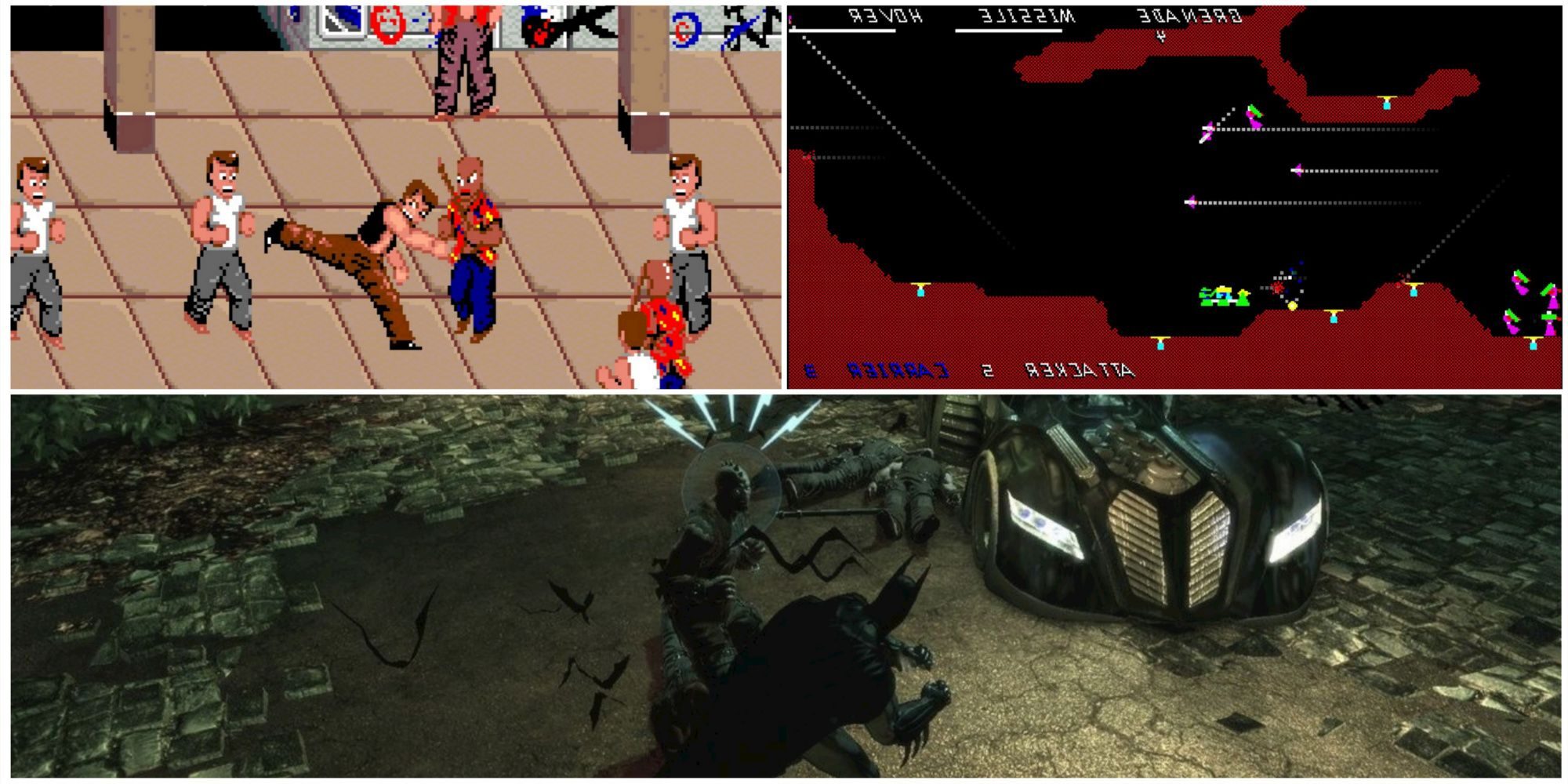The Best Action Games Featuring Innovative Control Schemes
In the dynamic world of video games, action titles continually push the boundaries of what’s possible, both in terms of gameplay mechanics and control schemes. As technology advances, developers are crafting innovative ways to immerse players deeper into their virtual adventures. From motion sensing to adaptive triggers, these groundbreaking control systems redefine our interaction with the digital realm. This article delves into the best action games that have revolutionized the way we play, spotlighting those that offer an exceptional blend of thrilling gameplay and inventive control designs. Discover how these games elevate the player experience through unique and engaging control innovations.
The Best Action Games Featuring Innovative Control Schemes
1. Immersive VR Action Titles
Virtual Reality (VR) has introduced new ways to experience action games, providing a fully immersive environment where players can physically move and interact with the game world. Titles like Beat Saber and Superhot VR leverage motion controls to create engaging gameplay that breaks away from traditional gamepad schemes. These games rely on hand tracking and full-body movements, making the player feel like they are part of the action. This level of immersion can be a game-changer, offering a more visceral and engaging experience.
2. Motion-Controlled Combat Systems
Motion controls have revolutionized the action genre, offering a way to physically engage with the game. Nintendo’s Wii console pioneered this approach, with games like The Legend of Zelda: Skyward Sword using the Wii Remote to mimic sword movements. More recent titles such as ARMS on the Nintendo Switch continue this trend, allowing players to punch and block by moving their Joy-Con controllers. These systems bring a new layer of physicality to gameplay, making it more interactive and exciting.
3. Touch Screen Innovations
Touch screen controls, especially on mobile devices and tablets, have enabled a different kind of interaction in action games. Infinity Blade for iOS, for instance, employs swipe gestures for combat, allowing players to slash, dodge, and parry with their fingers. This tactile form of control makes the game highly accessible while providing a unique, engaging experience. Such innovations have expanded the horizons of what action games can be on handheld devices.
4. Adaptive Trigger Feedback
The introduction of adaptive triggers on the PlayStation 5’s DualSense controller has added a new dimension to how action games can be experienced. Games like Ratchet & Clank: Rift Apart use these adaptive triggers to provide varying levels of resistance, simulating different weapon effects and adding a new layer of immersion. This tactile feedback can make actions like shooting, driving, and interacting with objects feel more realistic.
5. Voice Command Integration
Voice commands offer a hands-free way to control certain aspects of action games, adding convenience and a futuristic feel. Tom Clancy’s EndWar was a pioneer in this, allowing players to issue commands to their units using voice control. This approach can make strategy and multitasking easier, freeing up physical inputs for other actions. As voice recognition technology improves, we can expect even more sophisticated implementations in action games.
| Game | Platform | Control Scheme | Key Innovation |
|---|---|---|---|
| Beat Saber | VR (Various) | Motion Controls | Hand Tracking for Rhythm-Based Gameplay |
| The Legend of Zelda: Skyward Sword | Nintendo Wii | Motion Controls | Sword Movements with Wii Remote |
| Infinity Blade | iOS | Touch Screen | Swipe Gestures for Combat |
| Ratchet & Clank: Rift Apart | PlayStation 5 | Adaptive Triggers | Varying Levels of Resistance for Weapons |
| Tom Clancy’s EndWar | Various | Voice Commands | Command Units Using Voice Control |
FAQs
What makes a control scheme innovative in action games?
An innovative control scheme in action games is characterized by its ability to enhance the player’s experience through unique and intuitive inputs. This can involve the use of unconventional controllers, like VR headsets or motion sensors, or it can mean creative uses of traditional controllers that provide an unexpected level of engagement. The primary goal is to create a more immersive and interactive environment, making the player’s actions feel more directly tied to the on-screen events. For example, in The Legend of Zelda: Breath of the Wild, the use of the Nintendo Switch’s Joy-Con controllers for motion-based puzzles offers a fresh and engaging way to interact with the game world, setting it apart from more traditional control schemes.
Which action games are known for their innovative control schemes?
Several action games are celebrated for pushing the boundaries with their control schemes. Mirror’s Edge introduced parkour-based mechanics that required precise timing and fluid movements, making use of a control setup that felt both challenging and rewarding. Splatoon used the Wii U GamePad for aiming and map interaction, providing a novel twist on traditional shooters. Superhot VR redefined first-person shooter dynamics by incorporating VR controls that made players physically move to dodge bullets and attack enemies, creating an intensely immersive experience. Another notable example is Astro Bot Rescue Mission for PlayStation VR, which leverages VR controllers to offer a highly interactive and visually stunning gameplay experience.
How do innovative control schemes impact gameplay and player engagement?
Innovative control schemes can significantly impact gameplay and player engagement by making the gaming experience more immersive and enjoyable. When a control scheme is intuitive and responsive, it can make players feel more connected to the game, allowing them to perform complex actions with ease and precision. This heightened level of interaction often leads to greater emotional investment and satisfaction. For instance, in Half-Life: Alyx, the innovative use of VR controls not only enhances the game’s environmental interaction but also intensifies the player’s sense of presence and immersion, making every action feel more meaningful and urgent. Such innovations can transform standard gameplay mechanics into something fresh and exciting, keeping players engaged for longer periods.
Are there any drawbacks to innovative control schemes in action games?
While innovative control schemes can offer a more engaging and immersive experience, they can also present certain drawbacks. One potential issue is the learning curve; players accustomed to traditional controls may find it challenging to adapt to new methods of interaction, which can initially detract from the experience. Additionally, innovative controls often require specialized hardware, which can be a barrier to entry for some players due to cost or availability. There’s also the risk of gimmickry; if the new control scheme doesn’t significantly enhance the gameplay, it can feel unnecessary or even frustrating. For example, some players felt that the motion controls in Star Fox Zero for the Wii U were more cumbersome than innovative, detracting from the overall experience. Developers must carefully balance innovation with practicality to ensure that the new controls genuinely enhance the game without alienating players.



























Post Comment